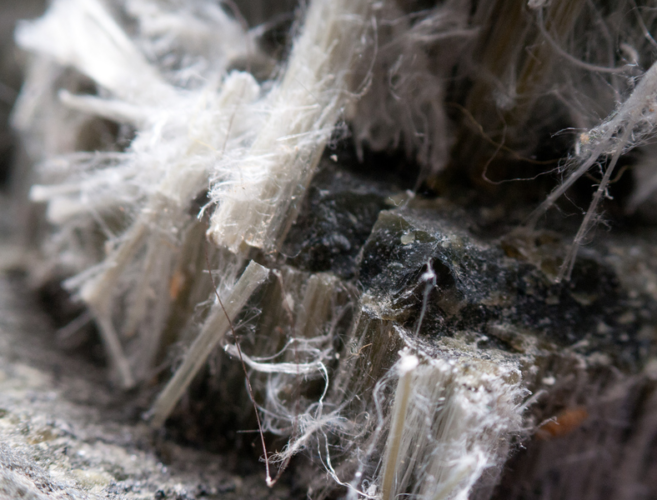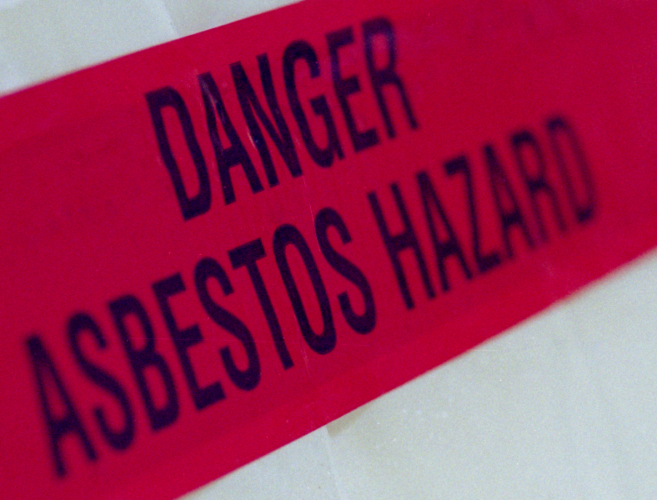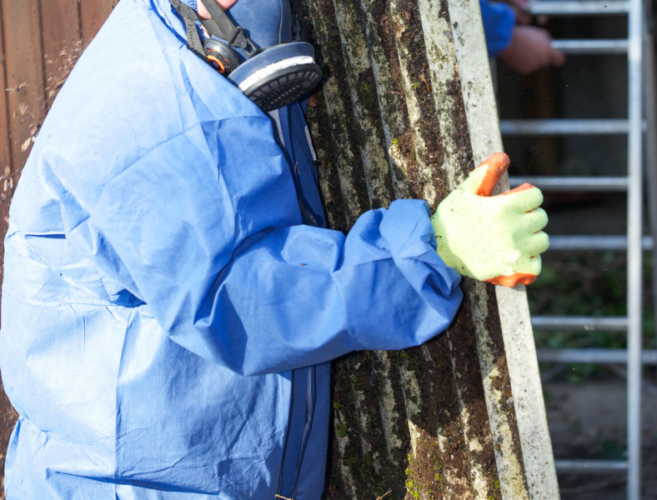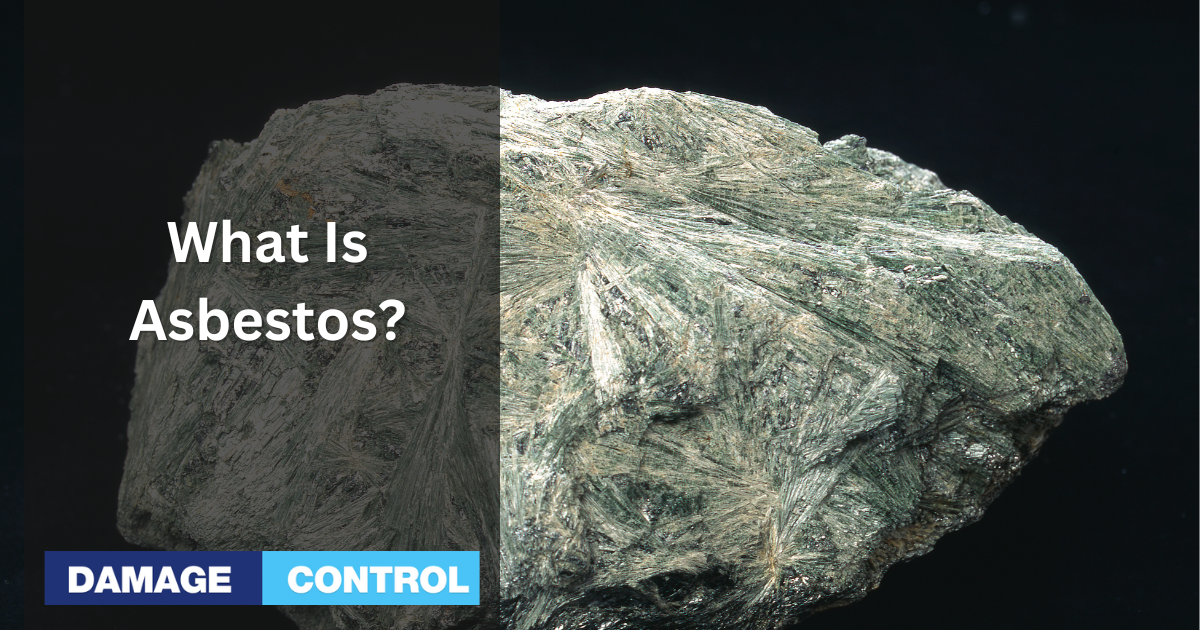Asbestos is a naturally occurring mineral that has been used for centuries in various industries. It was highly valued for its strength, durability, and fire-resistant properties.
However, it was not until the 20th century that the health risks associated with asbestos exposure became widely known.
Asbestos is composed of long, thin fibrous crystals that can easily become airborne when disturbed. When inhaled, these fibers can become lodged in the lungs and cause a range of health problems, including lung cancer, mesothelioma, and asbestosis.
Despite the known risks, asbestos was widely used in construction and manufacturing until the late 20th century. It is heavily regulated today, and its use is restricted in many countries.
What is Asbestos

Asbestos is a naturally occurring mineral fiber that is found in rock formations. It is made up of six different minerals, including chrysotile, crocidolite, amosite, anthophyllite, tremolite, and actinolite. The fibers are inextinguishable and fire retardant, making them useful in a variety of applications.
Thermal insulation for steam pipes, roofing material, plaster, and building materials commonly contained asbestos. It was also used in the automotive industry for brake pads and clutches.
When asbestos fibers are inhaled, they can become lodged in the lungs and cause serious health problems. Lung cancer, mesothelioma, and asbestosis have been linked to asbestos exposure.
The use of asbestos has been heavily regulated in the United States since the 1970s. Asbestos-containing materials are managed and disposed of according to EPA guidelines.
It is important to take precautions when working with or around asbestos-containing materials. Respirators and gloves should be worn, and materials should be handled carefully to prevent fiber release.
History of Asbestos
Asbestos is a naturally occurring mineral that has been mined for thousands of years. Asbestos use goes way back to ancient times, thanks to its fire-resistant properties. Interestingly, “asbestos” derives from the Greek term “sasbestos,” signifying inextinguishable.
This term reflected the material's resistance to the high heat from Greek fire pits, used for cooking and staying cozy.
Asbestos was used in clothing, insulation, and building materials during the Middle Ages. Asbestos was first used in North America for insulation in wealthy families' homes in the early 1700s.
Asbestos mining became industrialized in the late 1800s, with Russia emerging as the greatest supplier of asbestos. Other countries, including North America, Kazakhstan, and China, began mining asbestos during this time.
Six types of asbestos are defined mostly by their color and mineral makeup. These include amosite, crocidolite, anthophyllite, tremolite, actinolite, and chrysotile.
Chrysotile is the most commonly used type of asbestos and accounts for approximately 90% of all asbestos used worldwide.
The use of asbestos continued to grow throughout the 20th century, with its excellent thermal and electrical insulating properties making it a popular building material. However, the adverse effects of asbestos on human health were not widely acknowledged until the 1970s.
Asbestos exposure has been linked to lung cancer, mesothelioma, and other respiratory diseases.
Today, the use of asbestos is heavily regulated in many countries, and some have banned it entirely. However, asbestos-containing materials are still present in many buildings and products, making asbestos exposure a continuing health concern.
Asbestos-Related Diseases

Asbestos exposure can lead to various diseases, including mesothelioma, asbestosis, lung cancer, pleural thickening, pleural effusions, pleural plaques, and ovarian cancer. These diseases can be severe and in some cases, can lead to death.
Asbestosis is a chronic lung disease that occurs due to the inhalation of asbestos fibers. The fibers cause scarring and inflammation in the lung tissue, which can lead to shortness of breath, chest pain, and coughing.
Asbestosis symptoms can take years to develop after initial exposure to asbestos.
Mesothelioma is a rare form of cancer typically caused by asbestos exposure. It affects the thin lining of the lungs, chest, and abdomen. Symptoms of mesothelioma can include chest pain, shortness of breath, and abdominal pain.
Lung cancer is another disease that can be caused by asbestos exposure. Asbestos fibers can cause genetic mutations in lung cells, which can lead to the development of cancer. Symptoms of lung cancer can include coughing, chest pain, and shortness of breath.
Pleural thickening, pleural effusions, and pleural plaques are conditions that can occur due to asbestos exposure. These conditions affect the lining of the lungs and can cause chest pain and shortness of breath.
Ovarian cancer has also been linked to asbestos exposure. Women who have been exposed to asbestos may have an increased risk of developing ovarian cancer.
If you have been exposed to asbestos, it is important to speak with a specialist and get a chest x-ray to check for any signs of asbestos-related diseases. Early detection and treatment can help improve the prognosis for these diseases.
Asbestos in the Environment
Asbestos is a naturally occurring mineral fiber that is present in the environment. It can be found in rocks and soil, and it has been used in a variety of building construction materials for insulation and as a fire retardant.
Asbestos fibers are strong and heat-resistant, making them popular in consumer products and building materials.
Asbestos can be released into the air and soil during natural weathering processes, such as erosion and volcanic activity. Human activities, such as mining, manufacturing, and construction, can also release asbestos fibers into the environment.
Once asbestos fibers are released into the environment, they can persist for a long time. They can be carried by wind and water and deposited in different locations, including homes, buildings, and public spaces.
Tiles, pipes, adhesives, patching compounds, gaskets, coatings, vinyl tiles, paint, and consumer products all contain asbestos. It is also used in friction products, such as brake pads and clutch facings.
The EPA regulates the use of asbestos in consumer products and building materials due to its health risks. The Clean Air Act and the Toxic Substances Control Act regulate asbestos.
Overall, asbestos is a pervasive environmental hazard that can pose serious health risks to humans. It is important to follow proper safety protocols and regulations to minimize exposure and prevent asbestos-related health problems.
Occupational Exposure to Asbestos

Many industries are at risk of occupational asbestos exposure, including construction, demolition, and shipbuilding. Asbestos exposure can cause lung cancer, mesothelioma, and asbestosis when workers inhale asbestos fibers.
OSHA has established standards for evaluating and controlling asbestos exposure in the workplace to protect workers. Employers are required to monitor the air for asbestos, provide protective clothing and equipment, and train workers.
In addition to OSHA standards, the National Institute for Occupational Safety and Health (NIOSH) has developed guidelines for evaluating and controlling asbestos exposure.
NIOSH recommends that workers wear protective clothing and equipment, such as respirators and gloves, when working with asbestos-containing materials.
Workers in the construction industry are particularly at risk of asbestos exposure, as many building materials used in construction contain asbestos. Renovation and demolition of older buildings can also release asbestos fibers into the air. Asbestos-containing materials can be found in insulation, building materials, textiles, clutches, and other products.
Protecting workers from asbestos exposure requires a combination of engineering controls, administrative controls, and personal protective equipment. Engineering controls, such as ventilation systems and barriers, can help to reduce the amount of asbestos fibers in the air.
Administrative controls, such as work practices and training, can help to minimize worker exposure to asbestos. Personal protective equipment, such as respirators and gloves, can provide additional protection for workers.
Overall, it is essential for employers to take steps to protect workers from asbestos exposure. By following OSHA and NIOSH guidelines, employers can help to ensure that workers are not exposed to harmful levels of asbestos fibers.
Libby, Montana
Libby, Montana is a small town in the northwestern part of the state. It was once a thriving community thanks to the vermiculite mines that operated in the area. Vermiculite is a mineral used in various products, including insulation, fireproofing materials, and soil conditioners. Unfortunately, the vermiculite that was mined in Libby was contaminated with asbestos.
The asbestos in the vermiculite caused serious health problems for the people of Libby. Many residents worked in the mines or lived near them, and they were exposed to high levels of asbestos dust on a daily basis. This led to a public health emergency that has lasted for decades.
The first signs of trouble in Libby came in the 1970s, when workers at the mines began to develop lung problems. It wasn't until years later that the full extent of the problem was revealed.
In 2002, the Environmental Protection Agency declared Libby a Superfund site, which meant that it was one of the most contaminated places in the country.
The cleanup effort in Libby has been ongoing for years. The EPA has removed tons of contaminated soil and building materials from the area, and they continue to monitor the air and water quality.
Despite these efforts, many residents of Libby continue to suffer from asbestos-related illnesses.
In 2022, a former worker at the vermiculite mine in Libby was awarded $36.5 million in damages due to lung disease caused by asbestos exposure. This case highlights the ongoing impact of the asbestos contamination in Libby and the need for continued efforts to protect public health.
Conclusion
In conclusion, asbestos, a mineral once prized for its strength and fire-resistant properties, has been revealed to pose significant health risks. The inhalation of asbestos fibers can lead to severe diseases such as lung cancer, mesothelioma, and asbestosis.
Despite its known dangers, asbestos was widely used in various industries until regulations and restrictions were imposed. The history of asbestos spans centuries, with its use dating back to ancient times. Today, the importance of handling asbestos-containing materials with caution cannot be overstated, as they continue to pose a significant risk to human health.
Occupational exposure to asbestos remains a concern, particularly in industries such as construction and shipbuilding. Strict regulations and guidelines have been implemented to protect workers, emphasizing protective clothing and equipment use.
The case of Libby, Montana, serves as a stark reminder of the long-lasting impact of asbestos contamination on communities and the urgent need for ongoing efforts to safeguard public health. Proper safety measures and adherence to regulations are essential to minimize asbestos exposure and prevent associated health problems.

